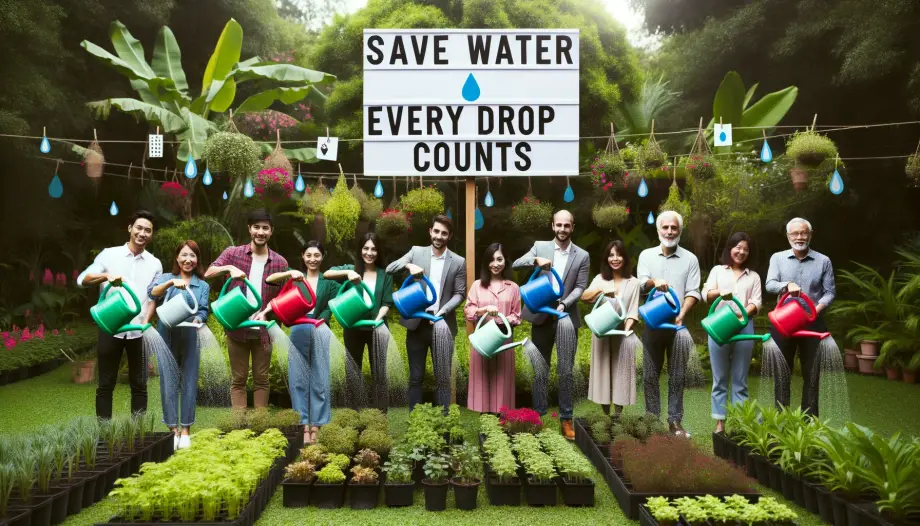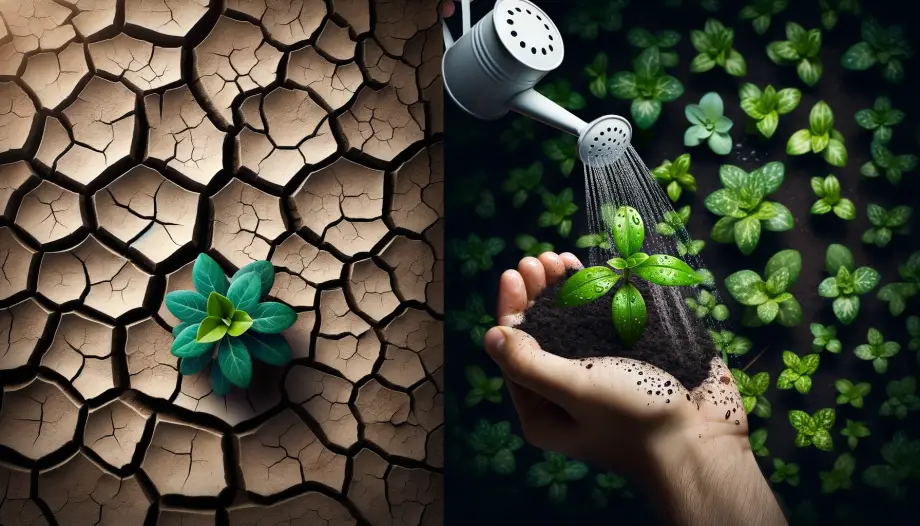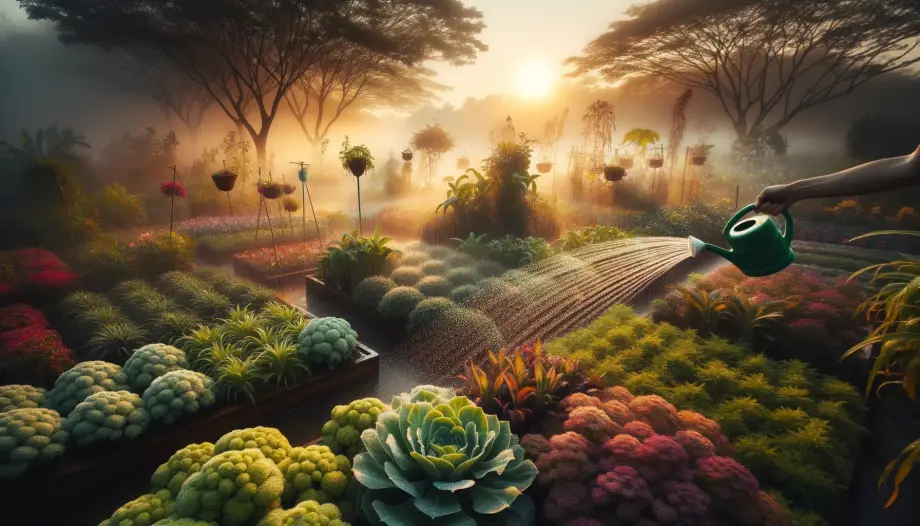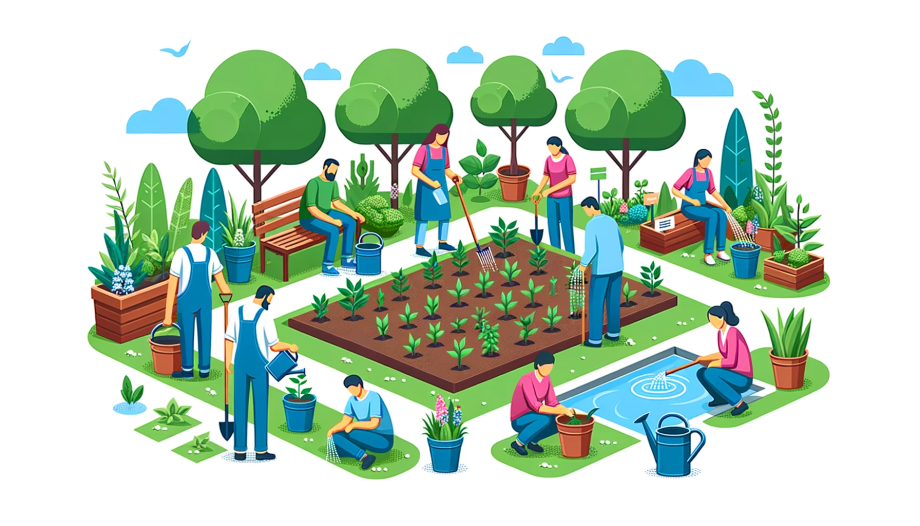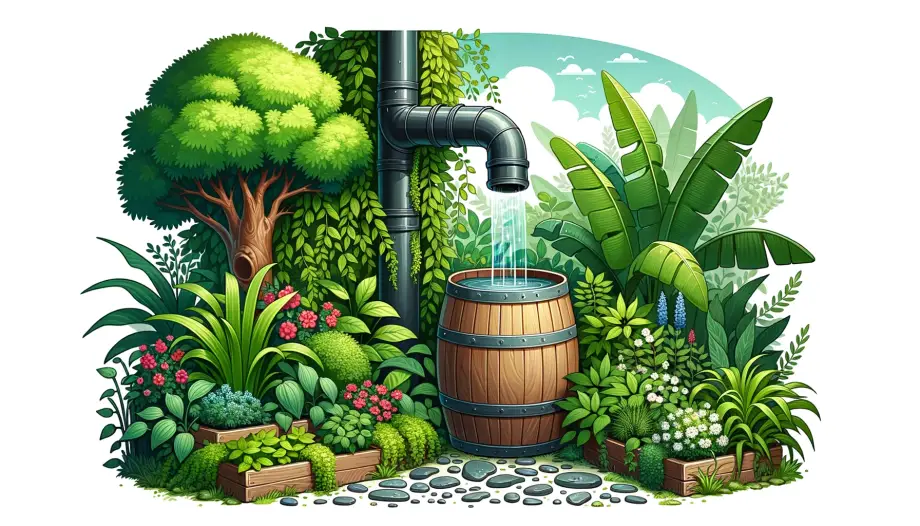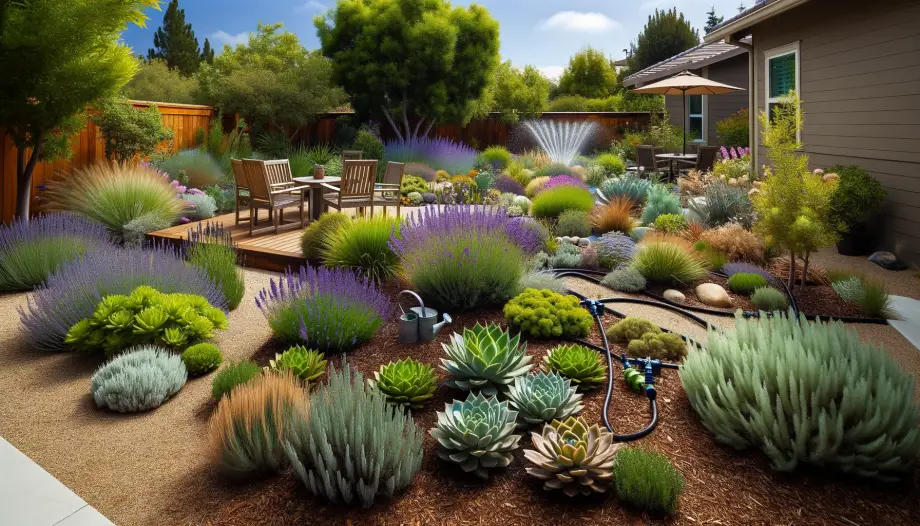
Discover a world of smart appliances that help water conservation, making a sustainable lifestyle both achievable and straightforward. Dive in now!
Smart Appliances Key Takeaways:
- Smart appliances that help water conservation are innovative gadgets like smart irrigation systems, leak detectors, and low-flow fixtures.
- They monitor and manage water usage efficiently, aiding in reducing wastage and promoting a culture of sustainable living.
Smart Appliances That Help Water Conservation
In our quest for a sustainable lifestyle, smart appliances that help water conservation are taking center stage.
These ingenious gadgets not only ease our daily routines but significantly impact our water usage.
As we navigate through modern solutions for age-old problems, these appliances are our companions in making eco-conscious choices
They are leading us towards a future where water, our precious resource, is used judiciously.
Delving into Smart Conservation
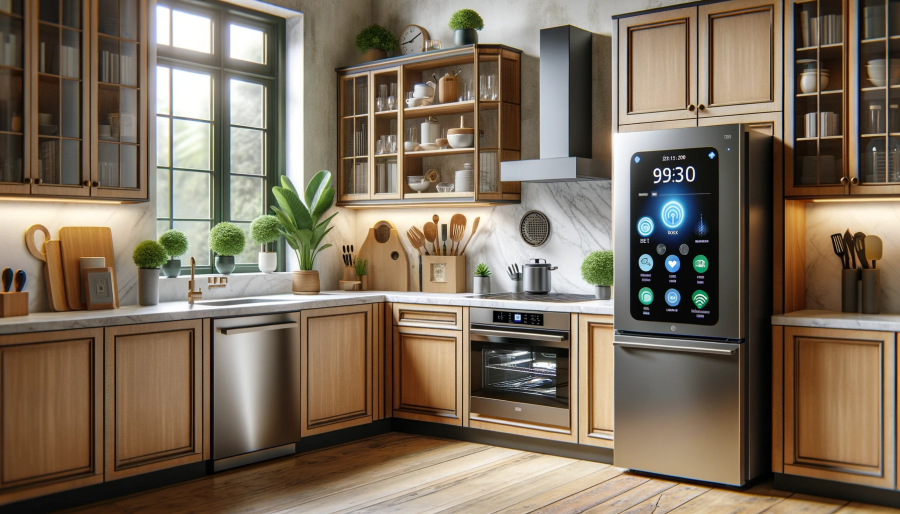
In today’s world, the act of conserving water transcends beyond being merely a good environmental practice.
It’s a crucial necessity. The fusion of smart appliances and water conservation strategies is paving the way toward a sustainable future.
This blend eases water usage and significantly curtails water wastage, ensuring that water resources are available for future generations.
Overview of Smart Appliances for Water Conservation
Smart appliances are at the vanguard of reducing water consumption both in homes and businesses, representing the epitome of technology meeting necessity.
Best Smart Appliances That Help in Water Conservation
Some smart appliances have emerged as game-changers in the domain of water conservation. From smart irrigation systems to leak detectors, these gadgets are making significant strides in reducing water waste.
Below is a table outlining some of the best smart appliances that are making a significant impact in the domain of water conservation:
| Smart Appliance | Description | Key Benefit |
|---|---|---|
| Smart Irrigation Systems | Automated systems that optimize watering schedules based on local weather data and soil moisture levels. | Reduces over-watering and saves a significant amount of water, especially in outdoor settings. |
| Leak Detectors | Devices that detect water leaks in real time and send alerts. | Early leak detection prevents water wastage and potential property damage. |
| Smart Water Meters | Meters that provide real-time data on water usage. | Helps in monitoring and managing water consumption effectively. |
| Low-Flow Showerheads | Showerheads designed to use less water per minute. | Reduces water usage during showers without compromising on the experience. |
| Smart Faucets | Faucets with sensors to control water flow based on motion detection or voice commands. | Helps in reducing water wastage by preventing unnecessary water flow. |
| Dual-Flush Toilets | Toilets with two flushing options for liquid and solid waste. | Allows for lower water usage by providing a lesser flush option for liquid waste. |
| Smart Rainwater Harvesting Systems | Systems that collect, store, and sometimes purify rainwater for reuse. | Reduces dependency on municipal water supply, thereby conserving water. |
| Smart Water Heaters | Heaters that allow for remote monitoring and control of water temperature and usage. | Enables efficient hot water usage, saving both water and energy. |
| Smart Water Filters and Purifiers | Devices that provide clean water while minimizing wastage. | Ensures clean water supply and helps in reducing water wastage during filtration. |
These smart appliances embody the epitome of technology meeting necessity, facilitating a culture of conservation and responsible water usage.
Water-Saving Devices Used in Homes
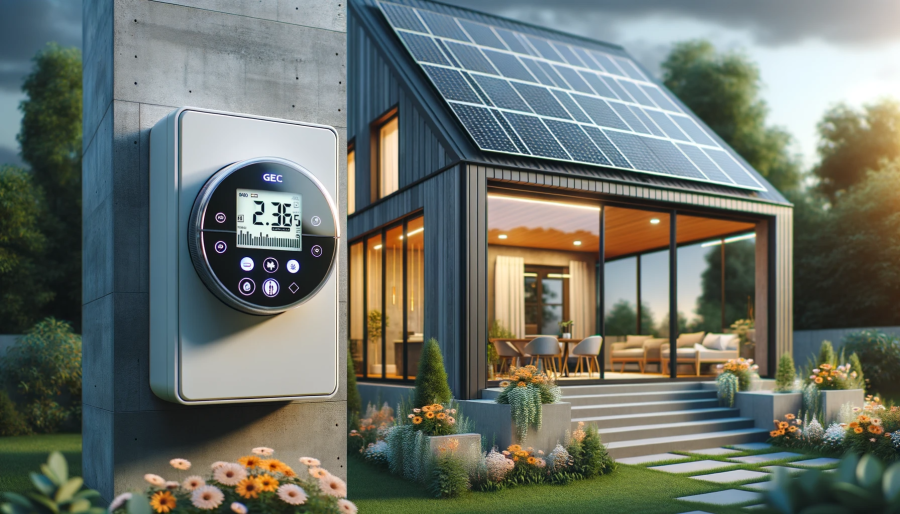
Homes are a major frontier in the battle against water waste. Devices like smart water meters, low-flow showerheads, and smart irrigation controllers are aiding homeowners in tracking water consumption, thereby enabling informed decisions to use less water.
Smart Water Leak Detectors
Smart water leak detectors play a crucial role in preventing water wastage by providing real-time data on water leaks, allowing immediate action.
Smart Automatic Water Shut Off Valves
These devices curtail water wastage by automatically shutting off the water supply when a leak or irregular water flow is detected.
Smart Water Heaters
By monitoring and controlling water temperature and usage remotely, smart water heaters reduce water and energy consumption.
Smart Irrigation Controllers
Smart irrigation controllers, utilizing local weather data and soil moisture sensors, optimize irrigation schedules, saving gallons of water in garden maintenance.
Smart Faucets and Showerheads
Smart faucets and showerheads regulate water flow and temperature, ensuring optimal water usage and reducing overall consumption.
Smart Water Filters and Purifiers
Smart water filters and purifiers ensure access to clean water while minimizing water wastage.
Smart Water Softeners
By monitoring water hardness and usage patterns, smart water softeners optimize the softening process, saving both water and energy.
Smart Water Meters
Smart water meters provide real-time water usage data, helping homeowners monitor and manage their water consumption effectively.
Smart Rainwater Harvesting Systems
These systems collect and store rainwater, reducing the demand for municipal water supplies and lowering water bills.
Smart Water-Saving Toilets
Innovative toilet designs like dual-flush technology minimize water usage and promote conservation.
Technologies and Techniques
In today’s world, technology is becoming a part of our daily lives.
When it comes to saving water, technology gives us many easy ways to do it.
In this section on Technologies and Techniques, we will look at the cool tech stuff inside smart appliances that help us save water.
We’ll learn about real-time monitoring and how smart homes help us use water wisely.
By understanding these technologies, we can use smart appliances better to save water.
This not only helps our environment but also saves money on our water bills.
Now, let’s dive into the tech side of saving water and see how it’s changing the way we use water every day.
Water Saving Technology
The backbone of smart water conservation is the technology that powers it. Understanding this technology is the first step toward making informed water-saving choices.
Technological Advancements in Water Conservation
Various technologies like IoT and real-time monitoring are aiding in reducing water consumption and detecting leaks early.
These advancements are propelling the water conservation movement forward, ensuring less water wastage.
Integration with Smart Homes
The integration of water-saving devices with smart home systems facilitates better control over water usage, leading to less water wastage.
Smart home devices sync seamlessly with water-using appliances, providing a cohesive approach to water conservation.
Real-Time Monitoring and Control Features
Real-time monitoring and control features in smart devices provide immediate feedback on water usage, enabling prompt actions to reduce wastage.
These features are crucial in maintaining a sustainable water usage routine.
Water Conservation Devices
Water conservation devices are the building blocks of a water-efficient home or business. They play a crucial role in managing water resources wisely.
Residential Applications
Residential applications of water conservation devices include smart water meters and low-flow showerheads that help in monitoring and reducing water usage.
Commercial Applications
In commercial settings, advanced smart sensors and automated irrigation systems help in managing water resources efficiently, reducing the overall water bills.
Success Stories and Water Savings Statistics
Success stories from both residential and commercial sectors illustrate the significant impact of these devices on reducing water wastage and promoting sustainability.
Below are real-world examples from both residential and commercial sectors illustrating the significant impact of smart water-saving devices:
Residential Sector:
-
Smart Home Technology Integration:
- Residents have been turning to smart home technology to aid in water conservation, especially as extreme weather events become more frequent. Utilizing smart water devices like intelligent irrigation systems and leak detectors, homeowners are able to manage their water use more effectively, thus reducing waste and saving on utility bills1.
-
Rachio Smart Sprinkler Controller:
- The Rachio smart water device is known for its ability to create personalized watering schedules. This smart sprinkler controller adjusts the watering schedule based on local weather conditions and the specific needs of the plants, soil type, and sun exposure. As a result, Rachio claims that homeowners can save up to 30% to 50% on water bills2.
Commercial Sector:
-
Whitbread’s Water Conservation Efforts:
- Whitbread, a well-known company, surpassed its own water conservation goal by a significant margin. Initially aiming for an 80,000-pound cut in expenses, the company ended up saving 350,000 pounds ($519,000) on water annually, showcasing the substantial financial savings that can be achieved through water conservation efforts3.
-
Water Management in the Industrial Sector:
- Commercial and industrial sectors are also benefiting from smart water meters and water management solutions. A look into water management solutions for the industrial sector revealed that smart water meters installed in commercial buildings could result in up to 50% water savings, which is a substantial reduction in water consumption and costs4.
These examples underline the substantial impact smart water-saving devices have had in both residential and commercial settings, showcasing their role in promoting sustainability and reducing water wastage.
Water Saving Devices for Businesses
Businesses are a major stakeholder in the water conservation movement. Adopting smart water-saving devices is a step towards a sustainable future.
Industrial Water Conservation Solutions
Industrial water conservation solutions include smart irrigation systems and automated water treatment plants that help in managing water resources efficiently.
Smart Water Management Systems
Smart water management systems provide real-time data on water usage, helping businesses to reduce water wastage and lower utility bills.
Cost-Savings and ROI
The initial investment in smart water-saving devices is offset by the substantial cost savings in water bills, proving to be a wise financial decision in the long term.
Water Saving Techniques
Incorporating water-saving techniques into daily routines is the first step toward a sustainable lifestyle. These simple changes can have a significant impact on water conservation efforts.
Methods and Ways to Save Water
Methods to save water include fixing household leaks promptly, using water-efficient appliances, and adopting smart irrigation schedules.
What Are 5 Methods of Water Conservation?
Five methods of water conservation include fixing leaks, using low-flow fixtures, practicing smart irrigation, harvesting rainwater, and being mindful of daily water usage.
Below is a table outlining the five methods of water conservation along with a brief description and benefit for each method:
| Method | Description | Benefit |
|---|---|---|
| Fixing Leaks | Identifying and repairing any water leaks in the home or business. | Prevents water wastage and lowers utility bills. |
| Low-Flow Fixtures | Using fixtures like faucets and showerheads that are designed to use less water. | Reduces water consumption without compromising functionality. |
| Smart Irrigation | Utilizing smart controllers to optimize irrigation schedules based on weather and soil conditions. | Ensures efficient watering, saving water and promoting plant health. |
| Rainwater Harvesting | Collecting and storing rainwater for later use such as watering plants or flushing toilets. | Reduces reliance on municipal water supply and promotes sustainability. |
| Mindful Water Usage | Being aware of water usage and adopting habits like turning off the tap when not in use. | Encourages responsible water use and fosters a conservation mindset. |
These methods are straightforward yet effective in contributing towards water conservation, helping individuals and communities work towards a more sustainable future.
What Are 10 Ways to Save Water at Home?
Ten ways to save water at home include fixing leaks, using low-flow fixtures, collecting rainwater, practicing smart irrigation, replacing old toilets with water-saving models, using smart water meters, checking for hidden water leaks, watering plants early in the morning or late in the evening, washing full loads of laundry, and turning off the tap while brushing teeth.
Here’s a table outlining the ten ways to save water at home along with a brief description and benefit for each method:
| Way to Save Water | Description | Benefit |
|---|---|---|
| Fixing Leaks | Identifying and repairing any water leaks in the home. | Prevents water wastage and lowers utility bills. |
| Using Low-Flow Fixtures | Installing fixtures designed to use less water. | Reduces water consumption without compromising functionality. |
| Collecting Rainwater | Collecting and storing rainwater for later use. | Reduces reliance on municipal water supply. |
| Practicing Smart Irrigation | Utilizing smart controllers for efficient watering schedules. | Ensures efficient watering, saving water and promoting plant health. |
| Replacing Old Toilets | Replacing old toilets with water-saving models. | Significantly reduces water usage with each flush. |
| Using Smart Water Meters | Using meters that provide real-time data on water usage. | Helps in monitoring and managing water consumption effectively. |
| Checking for Hidden Water Leaks | Regular inspections for hidden leaks like in toilets or underground. | Prevents unnoticed water wastage. |
| Watering Plants Early or Late | Watering plants early in the morning or late in the evening to reduce evaporation. | Maximizes water usage for plants. |
| Washing Full Loads of Laundry | Running the washing machine only when there’s a full load. | Reduces the number of washes and saves water. |
| Turning Off Tap While Brushing Teeth | Turning off the tap while brushing to prevent water wastage. | Simple habit that saves a surprising amount of water. |
Each of these methods is a step towards responsible water usage, playing a part in the larger picture of water conservation and sustainable living at home.
Community Water Conservation
Community water conservation is a collective effort towards a sustainable future. It requires the active participation of individuals, businesses, and local authorities.
Collective Water Conservation Efforts
Collective efforts include community-wide awareness programs, implementing water-saving policies, and promoting the use of smart water-saving devices.
What Are 4 Ways to Conserve Water as a Community?
Four ways to conserve water as a community include promoting water conservation awareness, implementing water-saving policies, encouraging the use of smart water-saving devices, and organizing community-wide water conservation initiatives.
Below is a table outlining the four ways to conserve water as a community along with a brief description and the potential impact of each method:
| Way to Conserve Water | Description | Potential Impact |
|---|---|---|
| Promoting Water Conservation Awareness | Running campaigns to educate community members about the importance of water conservation and how to save water. | Increased awareness can lead to a collective effort to reduce water usage. |
| Implementing Water-Saving Policies | Enacting policies that encourage or mandate water-saving practices within the community. | Structured guidelines can lead to measurable water savings across the community. |
| Encouraging Smart Water-Saving Devices | Promoting the use and benefits of smart water-saving devices among community members. | Smart devices can significantly reduce water wastage and promote efficient usage. |
| Organizing Community-Wide Initiatives | Organizing events or programs focused on water conservation, like tree planting, clean-up drives, or workshops. | Community engagement in water conservation initiatives fosters a culture of sustainability. |
These community-oriented approaches are crucial in cultivating a collective consciousness towards water conservation, driving significant and lasting impacts on a larger scale.
Exploring Products and Leveraging Technology
In this section, we are going to look at different products and the cool technology behind them that help us save water.
We will explore simple products like low-flow fixtures that help us use less water, to more advanced ones like smart irrigation systems that make watering plants a breeze.
We’ll also see how using smart technology can make a big difference in how we use water every day.
It’s all about making smart choices that help us save water and protect the environment.
So, let’s dive in and learn about these amazing products and the technology that powers them to make our homes and communities more water-wise!
Water Saving Devices for Toilets
Toilets are among the highest water-using appliances in homes. Smart water-saving devices for toilets are crucial in reducing water wastage.
Dual-Flush Technology
Dual-flush technology offers two flushing options, one for liquid waste and a higher volume flush for solid waste, reducing the amount of water used per flush.
Waterless Functionality
Waterless urinals and composting toilets are innovative solutions that require no or minimal water, contributing to water conservation.
Advanced Sensor Technologies
Advanced sensor technologies in toilets help in detecting leaks early, preventing water wastage.
Water Conservation Products
The market is flooded with innovative water conservation products that cater to both residential and commercial needs.
Innovative Products in the Market
Products like smart water sensors, faucet aerators, and low-flow fixtures are making water conservation easier and more accessible.
Eco-Friendly Water Filtration and Purification
Eco-friendly water filtration and purification systems ensure clean water while minimizing water wastage.
Rainwater Harvesting Products
Rainwater harvesting products like smart collection systems and storage tanks aid in collecting and utilizing rainwater, reducing the demand for local water supplies.
Leveraging Technology for Water Conservation
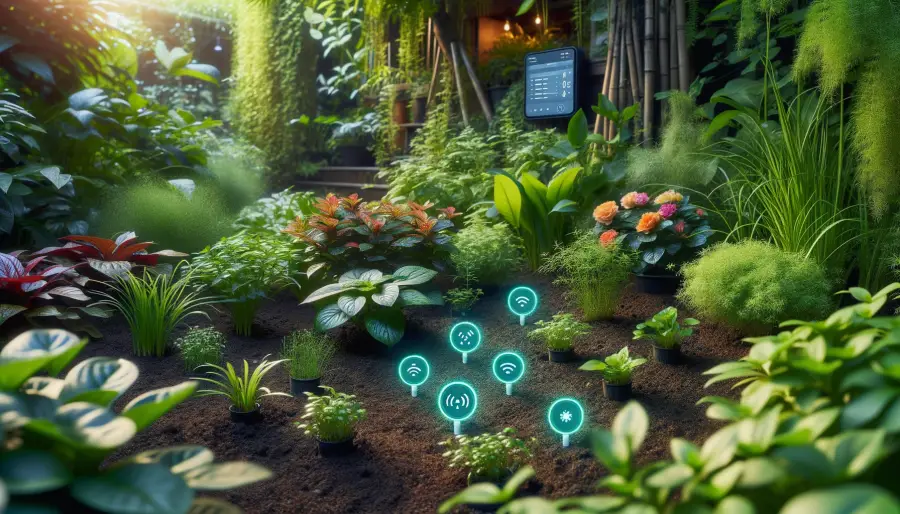
Technology is a powerful tool in the hands of individuals and communities aiming for water conservation.
In this section titled Leveraging Technology for Water Conservation, we’ll dive into how modern technology helps us save lots of water.
It’s amazing to see how a bit of tech can make a big difference in how much water we use every day.
From gadgets that tell us if a faucet is leaking to smart systems that water our gardens just the right amount, technology is stepping up to help us conserve water.
As we explore, we’ll learn how these tech tools are not only saving water but also making it easier and fun to be water-wise.
So, let’s jump into the world of technology and see how it’s helping us save water for today and the future!
Technological Solutions for Water Conservation
Technological solutions like smart irrigation systems, real-time monitoring, and smart water meters are instrumental in reducing water wastage and promoting conservation.
Here’s a table describing different technological tools and gadgets used for water conservation along with their functionality and benefits:
| Technology/Gadget | Functionality | Benefit |
|---|---|---|
| Leak Detectors | Detect water leaks in real-time and send alerts. | Early leak detection prevents water wastage and potential property damage. |
| Smart Irrigation Systems | Automate watering schedules based on weather and soil conditions. | Reduces over-watering, saves water, and promotes plant health. |
| Smart Faucets | Use sensors to control water flow based on motion detection or voice commands. | Helps in reducing water wastage by preventing unnecessary water flow. |
| Low-Flow Showerheads | Designed to use less water per minute. | Reduces water usage during showers without compromising on the experience. |
| Smart Water Meters | Provide real-time data on water usage. | Helps in monitoring and managing water consumption effectively. |
| Rainwater Harvesting Systems | Collect, store, and sometimes purify rainwater for reuse. | Reduces dependency on municipal water supply and promotes sustainability. |
| Dual-Flush Toilets | Offer two flushing options for liquid and solid waste. | Allows for lower water usage by providing a lesser flush option for liquid waste. |
| Soil Moisture Sensors | Measure soil moisture levels to optimize irrigation. | Ensures that plants receive adequate water while minimizing wastage. |
These technological advancements are making it significantly easier for individuals and communities to conserve water, showcasing the power of innovation in fostering a more sustainable future.
How Can We Conserve Water Using Technology?
By leveraging technology, individuals can monitor and control water usage in real time, detect leaks early, and implement water-saving techniques effectively.
Smart Appliances FAQs

Water conservation is a topic that holds substantial significance in our lives, especially given the modern-day challenges posed by climate change.
As technology advances, numerous smart appliances and devices have come to the fore to aid in water conservation.
These gadgets not only help in reducing water usage but also play a vital role in managing our utility bills efficiently.
Here, we’ve compiled a list of frequently asked questions to provide a better understanding of the technology and devices that aid in water conservation.
Q: What technology helps with water conservation?
A: Technologies like IoT (Internet of Things), real-time monitoring, smart sensors, and automated control systems are pivotal in water conservation.
They enable smart appliances to manage water usage efficiently, detect leaks promptly, and provide valuable data to users for informed decision-making.
Q: What devices can save water?
A: Devices such as low-flow showerheads and faucets, dual-flush toilets, smart irrigation controllers, leak detectors, smart water meters, and rainwater harvesting systems are instrumental in saving water.
Q: What device is used to control water usage?
A: Smart water meters and smart irrigation controllers are the primary devices used to control water usage.
They allow for real-time monitoring and management of water consumption, ensuring optimal usage and minimizing wastage.
Q: What are 7 ways to conserve water?
A: 1. Fix leaks promptly.
- Install low-flow fixtures.
- Use smart irrigation systems.
- Collect and use rainwater.
- Replace old toilets with water-saving models.
- Monitor water usage with smart meters.
- Practice mindful water usage habits daily.
Q: How do smart water devices help save money on utility bills?
A: Smart water devices reduce water wastage, leading to lower water consumption and subsequently lower utility bills.
They also provide real-time data on water usage, helping individuals make informed decisions to further save on costs.
Q: Are smart water devices compatible with existing plumbing systems?
A: Yes, most smart water devices are designed to be compatible with existing plumbing systems.
However, it’s advisable to check with the manufacturer or a professional plumber for specific compatibility information.
Q: What are the top brands offering smart water conservation appliances?
A: Top brands like Kohler, Delta, Moen, and Orbit offer a range of smart water conservation appliances including smart faucets, showerheads, and irrigation controllers.
Q: How do smart irrigation controllers contribute to water conservation?
A: Smart irrigation controllers optimize watering schedules based on local weather conditions and soil moisture levels, ensuring that landscapes receive adequate water while minimizing over-watering and wastage.
Adopting Smart Appliances That Help Water Conservation Final Thoughts
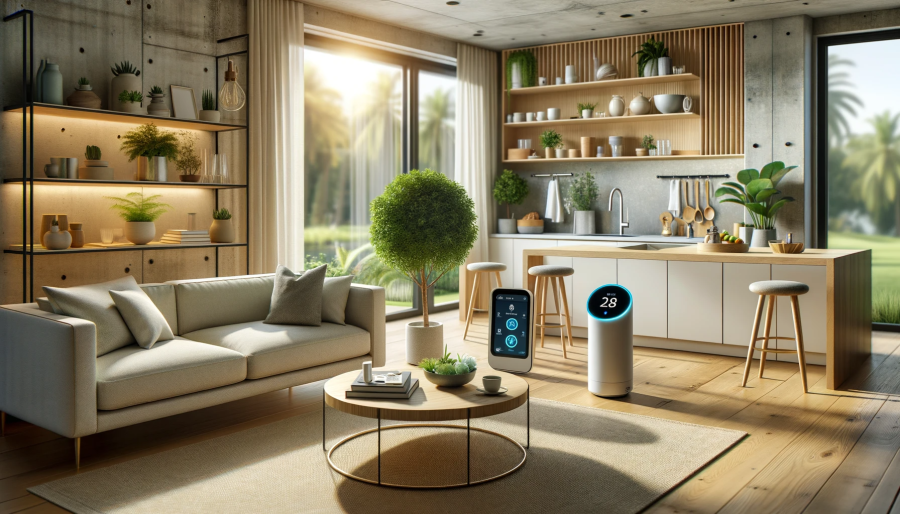
Adopting smart appliances for water conservation is a significant step towards ensuring a sustainable future.
These devices not only reduce water wastage but also encourage a culture of conservation.
The positive impact on the environment and utility bills is a testament to the importance of integrating smart technology into our daily lives for water conservation.
The key takeaway is that collective efforts in utilizing smart water-saving technologies can lead to a significant reduction in water wastage, fostering a sustainable living environment for present and future generations.










